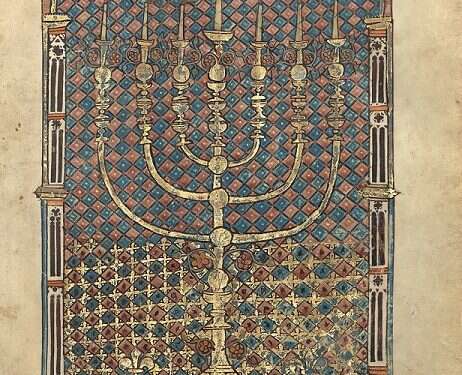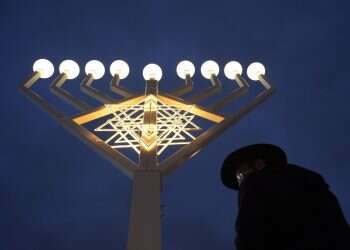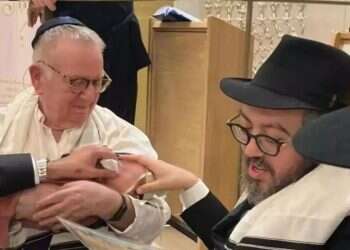A seven-century-old illuminated Hebrew manuscript known as the Rothschild Pentateuch has been acquired by the J. Paul Getty Museum in Los Angeles.
Created by an unknown artist and dated 1296, the pages of the manuscript are filled with decorative motifs, hybrid animals, humanoid figures and micrography – virtuosic displays of tiny calligraphy in elaborate patterns and designs.
The colors and gold that adorn this work distinguish it from most medieval Hebrew book production, which followed a largely textual tradition.
The text contains features that indicate it may have been written in France for Jewish emigres who had been expelled from England in 1290. The illumination was likely completed in France or Germany.
The manuscript was eventually acquired by Baron Edmond de Rothschild at some point before 1920, and then given after World War II to a German Jewish family, who later settled in Israel.
One of the illuminations, added at a later date, features full human figures. In the second half of the fifteenth century one page was replaced with a new insertion, carefully replicating the text and commentaries. The added folio can be identified as the work of Joel ben Simeon, one of the most celebrated Jewish artists known from the period.
The illumination of the manuscript also serves a practical purpose in dividing the text into weekly study portions. The opening of each book – Genesis, Exodus, Leviticus, Numbers and Deuteronomy – is celebrated with monumental Hebrew initials intertwined with lively marginal figures and, in one case, a full-page illumination.
Museum director Timothy Potts said that the Rothschild Pentateuch will be the "greatest High Medieval Hebrew manuscript in the United States, and one of the most important illuminated Hebrew Bibles of any period."
Potts said that the manuscript's illuminations represented "the pinnacle of artistic achievement of its day."
The Rothschild Pentateuch will make its debut at the Getty Center in an exhibition titled "Art of Three Faiths: A Torah, a Bible and a Quran" that is scheduled to run from August 7, 2018 to February 3, 2019.
In a press release, the J. Paul Getty Museum thanked trustee Ronald S. Lauder and his wife Jo Carole for their generous support, which enabled it to acquire the manuscript.




